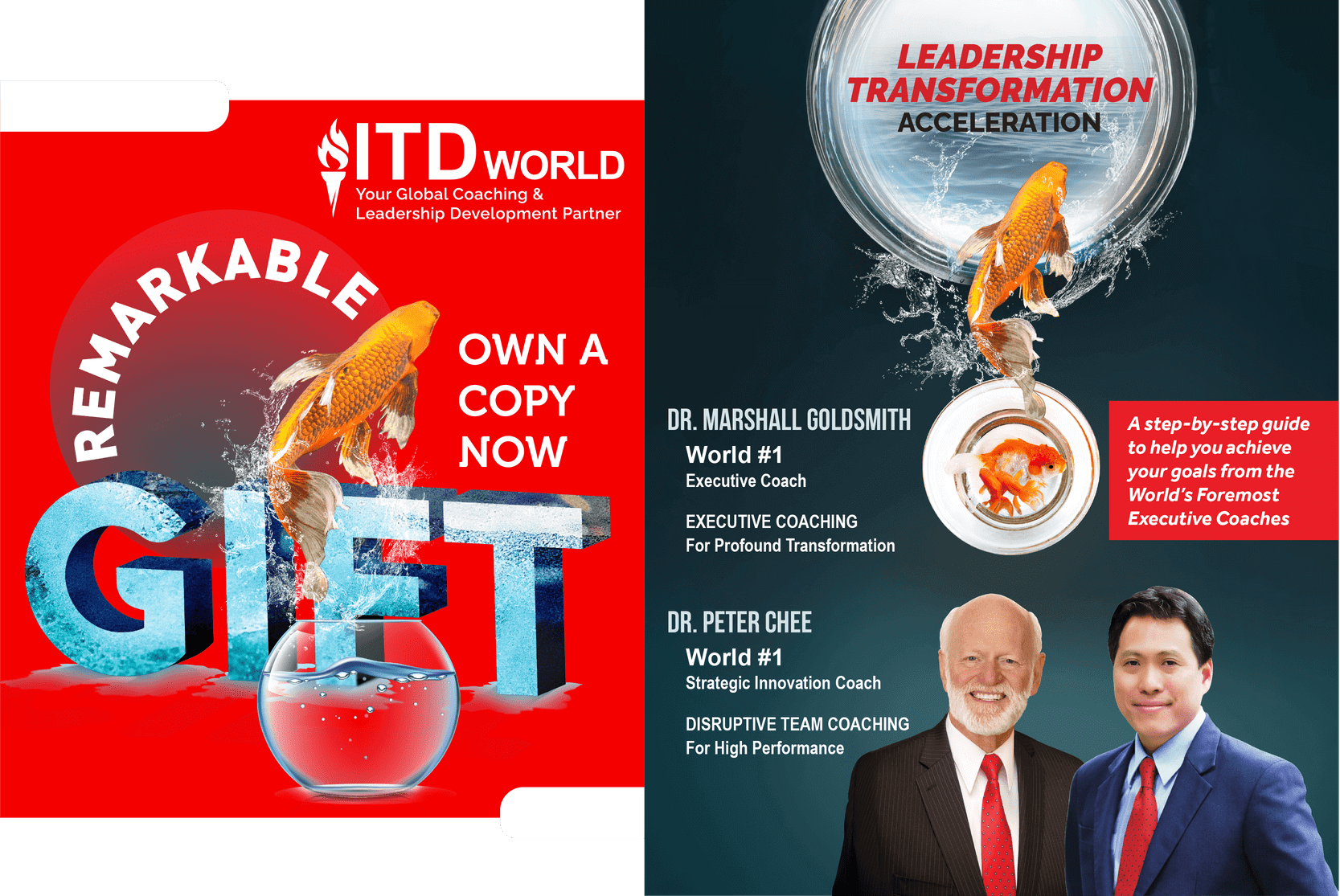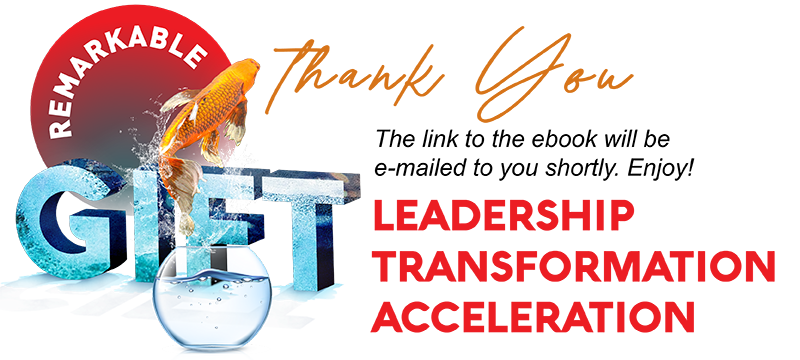


Overcoming the challenges amid the tide of instability is going to require leadership resilience. With a resilient mindset, you are more perceptive to windows of opportunities, and you are more daring to take on calculated risks which pay off to let you thrive in these challenging times
The times now show we are truly living in volatile times where scenarios can change at a moment’s notice; Where situations are in flux and uncertain; Where things can be both chaotic and complex; and Where signals and information can sometimes be ambiguous.
In rising above the tide, leaders would want to engage their resourcefulness and creativity to innovatively develop new solutions. You enable yourself to do so by leveraging on the 5Fs of Focus, Fast, Flexible, Fearless and Fun. These five pillars empower you to move decisively so you can build resilience to flourish in whatever circumstances you are in.

Being focused is not only just about being in a state of mind. You would not want to focus your energies on the wrong thing after all. Focusing means prioritizing what is important and concentrating on vital projects or tasks which brings in the desired results. Ask yourself, “What is the most urgent and impactful task I need to finish doing today?”. The focus then is on tasks and projects with a profound impact and consequence in the near to mid-term future. Focus your energy on successfully completing that task before moving on to the next.
For your team, focus is bringing their attention and energy back to the purpose, values and vision of the organization. Great things are bound to happen when the entire team is focused on carrying out the mission to bring a common compelling vision to life.

When the times change fast, you would want to change fast too. Perfection can be a good goal to strive for but getting things done is equally important as your organization faces an ever-changing industrial landscape. You do not want to be stagnant while others are already evolving to meet the demands of the present world.
Since the situation is fluid, you want to be in a state of accelerated pivoting. This means moving fast and accelerating to test your prototype and continuously improving as you go along. Failure can happen but quickly pivot away from what doesn’t work to activities which brings in the results you want.
The aim is to be fast and effective, not fast and perfect, and not fast but wrong. This means ensuring a minimum standard of excellence or product quality is met before rolling out the service or solution. You want to be quick to keep your clients happy, not push them away rapidly.

There is a famous maxim which states that those who stay flexible would not get bent out of shape. Resilience is not only about being tough; it is about being agile. In 5 Levels of Mastery, co-authored by me, World #1 Coaching Guru Marshall Goldsmith and my assistant Aaron Ngui, we touched upon the concept of conscious agility.
In brief, conscious agility is about staying mentally flexible by adapting and improving to overcome roadblocks along the way. If option A is a no-go, then quickly move on the option B, if that is also a no-go, switch to option C. It means you are clear on what you want to achieve but also agile enough to find different ways, means and methods to accomplish what you have set out to do to reach your destination.
Do your best not to get upset when things do not turn out the way you expect. Accept that plans can go off-course. A key to resilience is to be mindfully aware that you can take charge of continuously adjusting to changing conditions to get back on track, even if it means taking a detour or a different route towards reaching your end goal.
In difficult times, it can sometimes feel that the desired results are slow to come by. But a state of conscious agility would allow you to recognize that the fruit may sometimes take time to ripen for the harvest. This is true when it comes to change as you adapt and evolve to acquire more knowledge and relevant skills to enable a foundation for thriving. As your competency grows, your execution gets better, and success can come sooner.

A fearless leader is not one who takes unnecessary risks or who dashes into the fire without thinking. Fearlessness is acknowledging the fire exists but equipping yourself sufficiently to put out the fire or to storm through the fire coming out still in good shape. Fire and rescue services personnel do this all the time, they rush into burning buildings but are equipped with the right tools to execute their jobs properly.
What are the tools you can equip yourself with to be fearless to overcome challenges? A key component of fearlessness is keeping your energy levels high to keep the momentum flowing. The following three techniques can help you maintain a sense of readiness, so you feel prepared to face any situation.
The first technique is Emotional Healing (EH) which consists of tapping on vital energy points along your face and your body to release happy chemicals and to reverse negative to positive energy. The second technique flows from EH and is called the Energy Healing Technique (EHT) which follows the tapping motion along your arms, body and major joints. The third is an energizing exercise called the Energy Flow Technique (EFT) which combines systematic breathing with arm and torso movement to energize your senses. A video demonstration of all three done in tandem can be viewed here.
As a leader, you can help your team become fearless by boosting their self-esteem and making them feel like champions. Praise them when something goes well; mentor them to build their competencies and coach them to unleash their potential so they are continuously motivated to do more and do better.
Inspiring yourself and your team to having a strong belief in the mission is another important element of being fearless. People who are fixed on fulfilling a mission are more courageous to face adversity in their way. Your fearlessness serves as an example to others which empowers and lights the fires of courage in them. By working together boldly, your team and you are in a good position to face the fear tighter and conquer it fearlessly.
You can also leverage on the Uplifting Meditation Technique (UMT) to lift your heart, mind, body and spirit and others too. People who feel uplifted in all four areas of their life feel stronger and are more likely to face challenges fearlessly. The steps to apply the UMT can be viewed here.
Apply the UMT daily to increase self-esteem and self-confidence. Doing so means you do not have to depend on others to boost you up, instead you are strengthening yourself. In putting out your own fires, you can also help others to put out their fires and gain their support and influence. Helping others resolve their issues makes people feel like champions and when people feel like champions, they act more like champions to produce better results in the face of fear.

Life is boring without fun. Even in tough times, there are moments of joy you can build upon to maintain a positive outlook. One way to bring in happiness is to embrace an attitude of gratitude. Being grateful is a powerful driver for mental and emotional well-being. By being grateful, you are putting your attention on the bird already in your hand and not the two birds in the bush.
How do you bring in more gratitude and more joy? You can start a gratitude journal where you record down the things you are thankful for each day. Clients who have started one have shared that they feel more upbeat and positive as they are constantly reminded of the many blessings they have in life. See why gratitude is the Mother of All Virtues for more details on why gratitude is important for fun in life and how to start your own gratitude journal. When you feel more light-hearted, you are more happy and joyful. In such a state, you are more likely to enjoy what you do and to spread the joy to others.
Access this powerful emotion by maintaining authentic rapport with others using humour. Connect with people and share your happiness and their happiness together. A well-developed sense of humour can generate hope and optimism, improve overall mood states, ignite joy and laughter. Laughter releases the endorphins in your body which are widely known to boost your health to uplift your well-being and gives more energy to do positive things.
Tap on fun by using humour. Watch a sitcom, listen to a funny podcast or even share a joke with your loved ones or team to lighten the mood and blow away the dark clouds. Many leaders use humour to deal with the responsibilities placed on their shoulders. Former USA president Barrack Obama is quoted as saying, “You have to take your responsibility seriously, but you know you have to be able to laugh at yourself first and foremost in order to be able to manage the whole thing.” He is widely known for possessing a sense of humour and has been reported to leverage on laughter to survive the stress of world leadership. Another world leader who leans on humour is Mahatma Gandhi who said, “If I had no sense of humour, I would long ago have committed suicide.” He once quipped that he traveled on the third-class train carriage because there was no fourth class in response to a reporter’s question.
Here you go, these 5Fs are the pillars of leadership resilience in times of crisis. Building upon them provides a solid foundation for your efforts as you overcome barriers thrown up by circumstances. By successfully navigating over these obstacles, you position yourself to be me resilient and thrive in challenging times.
To fully maximize capacity and capability, partner with an executive coach and mentor to unleash your fullest potential to thrive in challenging times
To engage Dr. William J. Rothwell or other gurus to speak, train and coach your team, please go to:



